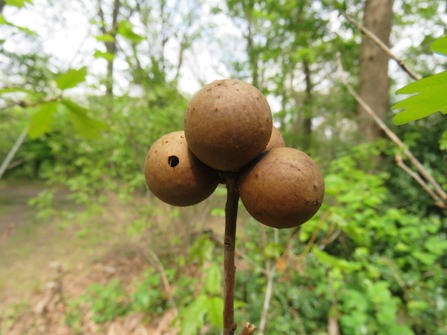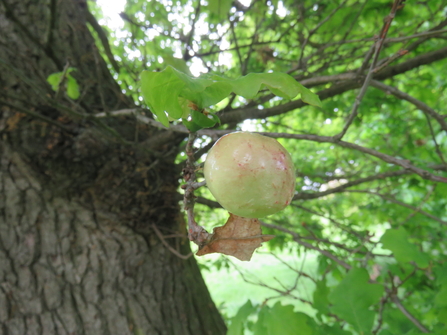Virgin births
The life cycles of the gall wasps are as strange as the structures they produce. Many species have a two-stage life cycle with alternating sexual and asexual generations.
For example, the wasp known only by its scientific name Andricus kollari has an all-female generation that can produce eggs without the need to mate through a process known as parthenogenesis. This asexual generation lays its eggs in the buds of the Turkey oak, a species introduced to the UK from south-eastern Europe and Asia Minor in the 18th century. As the wasp larva develops, it releases chemicals that modify the growth of the bud that houses it to produce a gall. The gall concentrates the plant’s resources, creating an ideal microhabitat where the larvae can feast on plant tissue and remain relatively safe from predation.
A sexual generation that includes both males and females emerges from the galls of the Turkey oak. These wasps mate and the females lay their eggs on the buds of our native oak species: the English oak or the sessile oak. The resulting larvae each form a smooth round marble gall that starts green and matures to a rich brown in late summer. Once they have completed their metamorphosis the all-female wasps emerge through a neat hole to begin the cycle again.
As an aside, some animals, including certain species of whiptail lizards, have entirely dispensed with the need for sex (and males!) and reproduce solely through parthenogenesis.



